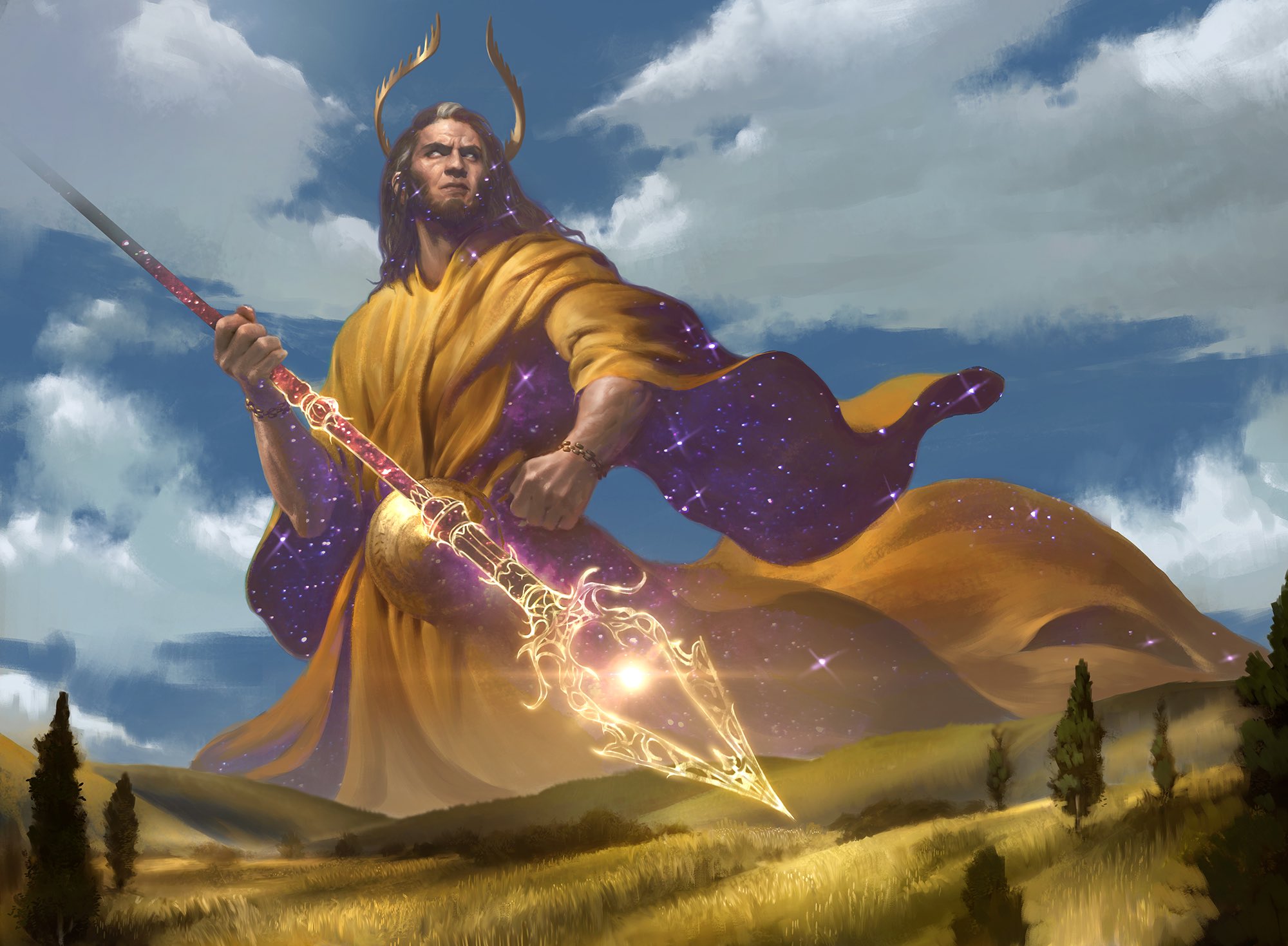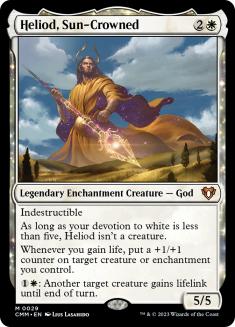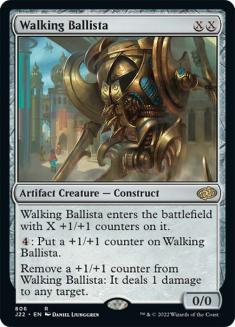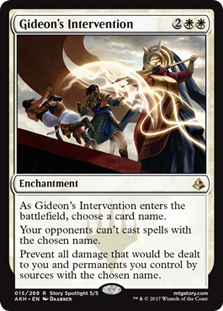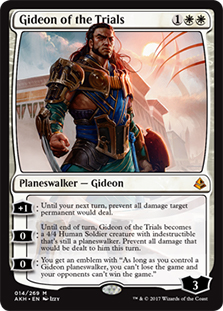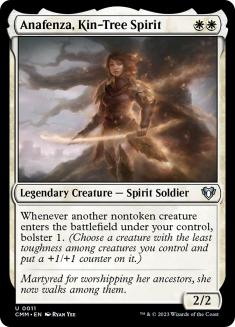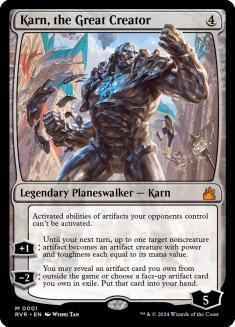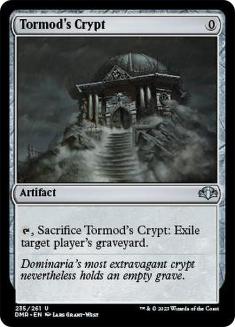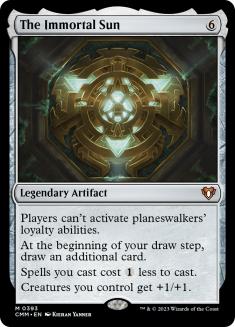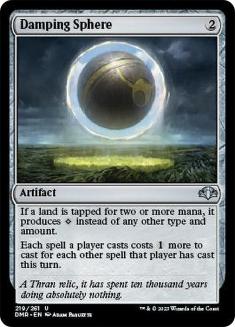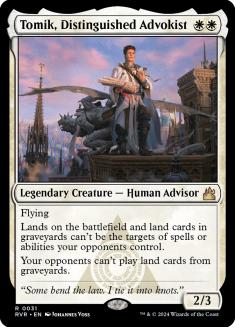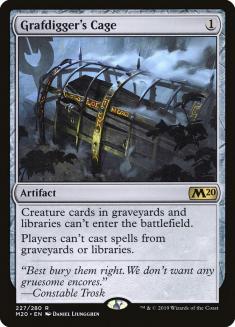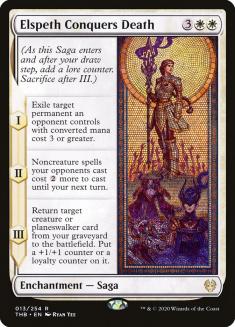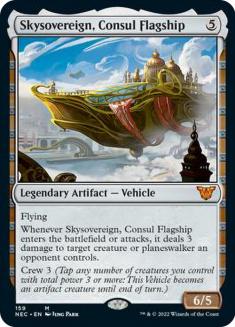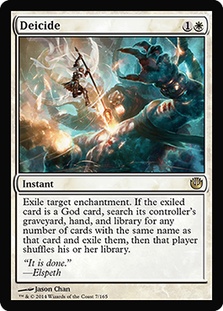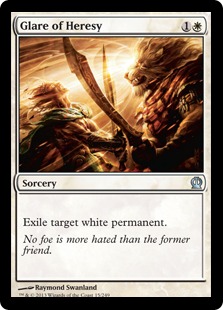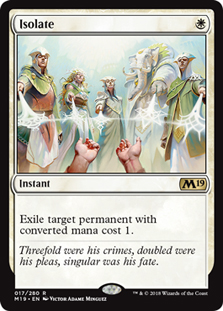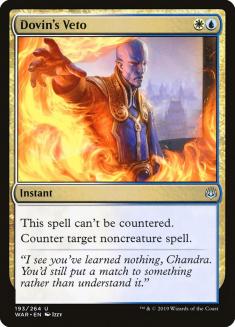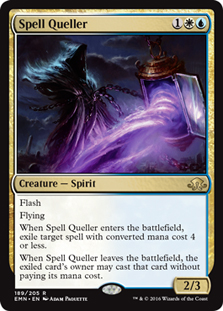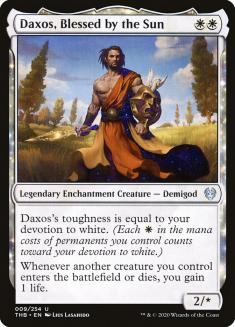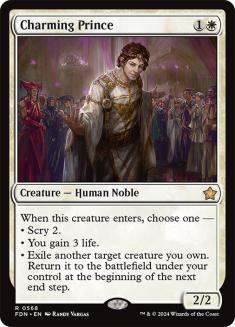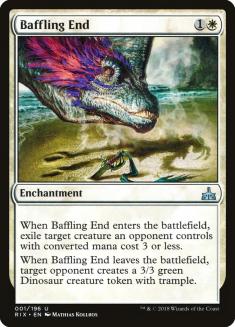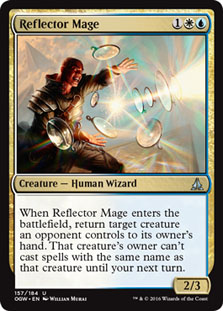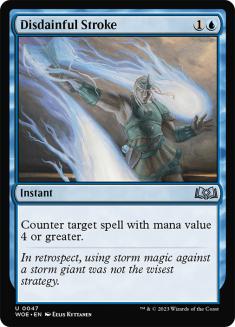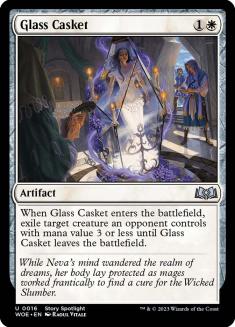Before Ikoria: Lair of Behemoths hit Pioneer, Mono-White Devotion was my favourite deck in the format by a pretty wide margin.
Creatures (23)
- 4 Knight of the White Orchid
- 2 Anafenza, Kin-Tree Spirit
- 4 Thraben Inspector
- 3 Walking Ballista
- 4 Arcanist's Owl
- 2 Daxos, Blessed by the Sun
- 4 Heliod, Sun-Crowned
Planeswalkers (6)
Lands (25)
Spells (6)

When the combination of Heliod, Sun-Crowned and Walking Ballista first locked eyes in Pioneer, people were keen to jam them in as the top-end of aggressive decks, or to focus on speedily assembling these two pieces to steal wins against unprepared opponents.
It turned out, though, that the best home for them was in what was Pioneer’s best midrange deck. Heliod’s and Walking Ballista’s activated abilities both provide incremental advantage that can pile up if you’re playing a deck that’s more willing to have the game go a bit longer than the faster shells people put them in earlier on, and result in a deck that is mana-hungry in a way that can only be satisfied by hitting your land drops every turn. Both spells have a level of modality to them too, letting you pressure opponents that go bigger than you whilst letting you gain life and shoot down smaller creatures against the decks aiming to go underneath you, and you want the flexibility in play patterns offered to you by a midrange deck to truly maximise that modality.
A midrange deck also just makes more sense for this combo because it’s the best at punishing people who are ready to disrupt it. It’s a lot harder to come at you with a pile of removal spells when your deck has sticky threats and two-for-ones. The end result is a deck that can go toe-to-toe with the more controlling decks in the format by using the threat of a combo to make it hard for your opponent not to leave mana open whilst you out-grind them, whilst against the more aggressive decks you can try and shut down their offence and stabilize with better threats, the option of comboing ever-present should the game get out of hand for you.
Despite being a pile of white cards, it was very powerful and very compelling. With the release of Ikoria, and the unveiling of the companion mechanic, it also just got a huge power boost.
Creatures (33)
- 4 Knight of the White Orchid
- 2 Anafenza, Kin-Tree Spirit
- 4 Reflector Mage
- 4 Thraben Inspector
- 4 Walking Ballista
- 1 Tomik, Distinguished Advokist
- 4 Arcanist's Owl
- 4 Charming Prince
- 2 Daxos, Blessed by the Sun
- 4 Heliod, Sun-Crowned
Planeswalkers (4)
Lands (34)
Spells (9)

Yorion, Sky Nomad is having a huge impact on Pioneer, and Dom Harvey made a great case for the card in his article this week. He covered what makes Yorion, Sky Nomad so great in this new iteration of the deck, Yorion Azorius Devotion, so you should need little convincing, but to emphasize one point based on my experiences with this deck over its history, I rarely lost games to people getting underneath me with aggressive starts when I played Mono-White Devotion, and most games I lost would either be due to my opponent combo-killing me or due to me running out of things to do with my mana.
This problem, of running out of things to do, is a big part of why the old Mono-White Devotion lists eventually adopted Karn, the Great Creator. Now, though, with a companion by your side, and especially one who keeps the wheels spinning in the way that Yorion does, you run out of things to do so much less often. One of the deck’s few existing flaws just vanished overnight.
As far as lists go, I’m a pretty big fan of how Cain Rianhard has been building the deck, and my own list that I posted above is quite close to his as a result; in fact a lot of lists have rapidly converged towards where his list is at. To cover some choices that see at least a little variability from one maindeck to the next…
I am not a fan of Gideon’s Intervention. I understand the appeal of it since it can steal Game 1s against Lotus Breach, which has always been this deck’s worst matchup, and it is quite powerful against Dimir Inverter too. It is weak elsewhere, though, often hoping that it gets to look like a clunky and expensive removal spell, and even in the matchups where it is good in Game 1 it becomes much weaker after sideboarding against the enchantment removal that people are already incentivised to bring in against you.
Gideon of the Trials is not a good Magic card, but one that hopes to take advantage of opposing decks being built poorly. This card was always more of a necessary evil in this deck when Dimir Inverter was at its most popular. The matchups where this card is at its best have been on a serious down-tick, and even against Dimir Inverter the move towards more copies of Hero’s Downfall in that archetype have made this Gideon much less potent than it was anyways. In these Yorion builds specifically, it’s hard to fit in a critical mass of different Gideons in the same way you could with 60-card builds too; even if you wanted to play a more Gideon-centric build you would still draw your second Gideon much less often than in a non-Yorion build, which in turn makes the Gideon of the Trials emblem you got earlier in the game have much less value to you.
I’ve seen lists cut Anafenza, Kin-Tree Spirit, which is deeply confusing to me. I’m much closer to wanting to add a third copy than ever consider cutting any, as I’ll get to in more depth shortly. Anafenza bolstering onto Walking Ballista is one of the more powerful interactions within the deck against any opponent that’s looking to create a battlefield presence.
A Karn, the Great Creator package is on the list of things I’d like to try out properly at some point, though my suspicion is that this is simply not good in the archetype anymore. It’s rare that you run out of things to spend your mana on now, which makes the card advantage it provides, and the up-front cost to get it onto the battlefield, less appealing and more problematic respectively. The big gain would be that you’d gain a lot more access to hate cards in Game 1 against Lotus Breach, so if that deck continues to see such high amounts of play then moving towards Karns could be worthwhile, but I would be a bit surprised if it is the right way to go.
Whilst the maindeck feels largely set-in-stone this early on, you’re going to have a lot more options when it comes to building your sideboard, which, as with all good midrange decks, you’ll want to change from one week to the next depending on what decks you expect to face.
This sideboard pays particular respect to Lotus Breach since that deck is popular currently, but when people start giving that deck enough respect such that it stops putting up so many results, then your Damping Spheres; Tomik, Distinguished Advokists; and Grafdigger’s Cages all become much less important for you to bring in such large quantities.
The fourth Elspeth Conquers Death and some copies of Skysovereign, Consul Flagship are your haymakers for opposing midrange decks; Elspeth Conquers Death being so popular in these mirror matches makes it hard to invest in an expensive permanent that doesn’t do something incredibly powerful the moment it hits the battlefield, which pushes us towards these psuedo-Flametongue Kavus. Skysovereign is particularly appealing to me because it lets you increase your density of removal against small, aggressive decks without in turn making yourself threat-light and bad at closing games.
Against Uro, Titan of Nature’s Wrath midrange decks specifically, Elspeth Conquers Death is important as an answer to Uro that can also answer planeswalkers and isn’t vulnerable to enchantment destruction in the way a Banishing Light effect might be, and if particularly graveyard-centric Uro midrange decks pick up popularity again, then Rest in Peace is a nice tool to have access to in addition.
If the midrange matchup you’re looking to improve is the mirror specifically, then Deicide and Glare of Heresy are also great options, though these cards certainly aren’t the staples of these Devotion sideboards that they used to be now that Elspeth Conquers Death gives you a lot more ability to remove opposing Heliods.
In general I’m not a big fan of having too many cards like Isolate and Supreme Verdict in your sideboard as I think the matchups where these cards shine are typically matchups that you’re already very excited to be facing anyway. Yorion Azorius Devotion is very good against aggressive decks, in no small part because your deck is trying to make Walking Ballista as good as it can be short of putting Hardened Scales in your decklist.
I’d always want some counterspells in my sideboard, but what they are can vary a bit based on personal taste and what you expect to play against. That said, don’t underestimate how obnoxious Spell Queller is alongside Teferi, Time Raveler’s static ability, especially in matchups where opponents can’t attack down your Teferi easily.
To cast the Heliod and Ballista combo from hand and kill your opponent, you need access to a total of nine mana. The presence of either Anafenza, Kin-Tree Spirit or Daxos, Blessed by the Sun reduces the total by two, as then you only need to cast your Walking Ballista for X=1 due to the additional counter it will be granted.
If you want to combo through a removal spell, you need an additional two mana so that you can give your Ballista lifelink twice, once before the removal spell and once in response to it; playing through removal like this only works if the Ballista enters with two counters already on it, though, so it does not allow you access to the Anafenza/Daxos discount. If you think the removal spell the opponent could have hits a Ballista, cast the Heliod first, and in the unlikely event the removal spell could only tag the Heliod, cast the Ballista first.
If you untap with a combo piece already on the battlefield, things are much more manageable. A Heliod already on the battlefield makes for a six-mana combo turn, whereas if the combo piece that’s already on the battlefield is a 1/1 Ballista, you can still kill for just five mana if your opponent has no blockers by giving your Ballista lifelink and attacking with it to trigger the freshly cast Heliod and get that second counter on your Ballista. If your Ballista is a 1/1 but your opponent does have blockers, giving another creature lifelink and chump-attacking with it will get that extra counter onto your Ballista and allow you to combo.
As I mentioned earlier, Anafenza’s interaction with Walking Ballista is very powerful, allowing you to store up counters on the Ballista at an absurd rate; this is so much the case that if I have Anafenza and Ballista both in my opening hand, I’ll often decline to cast my Thraben Inspector on Turn 1 so that I can use it to trigger Anafenza instead. Remember you can remove counters from your Ballista in response to Anafenza triggers to keep Ballista’s toughness low enough that you can keep bolstering onto it; this is important in enabling you to take down large creatures with your Ballista.
If you have Anafenza and Ballista on the battlefield, your Charming Prince will often represent two Ballista counters, whereas a pair of Charming Princes will represent a counter every single turn as the Princes loop each other every turn cycle. Relatedly, casting Yorion is very appealing when exiling three permanents with it suddenly means four extra Ballista counters with this interaction.
Charming Prince, like Dom mentioned, is unusually powerful in this deck. Don’t forget that the gain-life mode represents an immediate +1/+1 counter via Heliod’s triggered ability, and don’t underestimate how worthwhile it is to set up Charming Prince and Yorion looping one another in and out of exile. A single Charming Prince on the battlefield when you cast Yorion lets you keep your Yorion safe from sorcery-speed removal by keeping it in exile throughout your opponent’s turn whilst re-triggering all your other permanents in every one of your end steps.
If you have two Charming Princes when Yorion hits the battlefield then things get really weird as, by ordering triggers correctly, you can have Yorion returning from exile not every other end step, but instead every end step. Yorion exiles both Charming Princes. On your end step both return, with one exiling Yorion and one exiling the other Prince, and then on your opponent’s end step you have Yorion return first, exiling the remaining Prince (and anything else that you want to blink) before the Prince you’d blinked in your turn returns, sees Yorion, and immediately exiles it again. When you set it all up it feels ludicrous, and at least a little strange to wrap your head around.
Baffling End is also unusually powerful in this deck due to how much you get to reset it. The most common sequence is that if you have a Reflector Mage and a Baffling End on the battlefield when Yorion hits, you can exile both, and then on your end step Reflector Mage will come in and bounce the 3/3 Dinosaur that Baffling End left in its wake whilst the Baffling End will return and snipe down your opponent’s best creature. That said, bouncing a Baffling End with your Teferi, Time Raveler is often appealing too later in the game, when giving your opponent a 3/3 is much less threatening than your opponent’s Lurrus of the Dream-Den or whatever else they have.
Sideboarding
In true midrange fashion your general approach to matchups is that you want to take a controlling role against faster decks, with the end-game resulting in your locking your opponent out of ever having a meaningful battlefield presence with a large Walking Ballista, whilst against decks that are slower than you you should try to pressure them as much as possible with the three-pronged attack of medium Runeclaw Bear beatdowns, the threat of comboing, and looming Yorion value making it hard for your opponent to know where to devote their attention toward containing you.
Sideboarding with Yorion Azorius Devotion is fairly intuitive, though in addition to everything I’m about to say, note that if there’s a card you’re tempted to bring in, or not sideboard out, it’s always fine to remove a copy or two of Knight of the White Orchid when you are on the play, where its ability is much less likely to be beneficial to you.
VS Lotus Breach
Out:
In:
This matchup is quite bad for you, and you’ll need to get a bit lucky. To that end, strive for creating your own luck; mulligan towards hands that either have a good mix of pressure and disruption or a clean avenue to combo-killing your opponent. Personally I’m also a fan of keeping hands with high upside, since I feel like I need luck on my side anyway; if my hand has a good amount of pressure and one half of the combo, then I feel fine keeping it, as suddenly drawing either the other half of the combo or a piece of disruption makes the hand very strong.
Whilst you can’t always afford to do this, slow-rolling Damping Sphere where it is both possible and safe to do so makes the card a lot more potent as springing it on your opponent once they have a Lotus Field on the battlefield can either result in them having to put in more effort, at a much more inopportune time, into removing it, or ideally stop them having access to coloured mana altogether.
VS Lurrus Orzhov Auras
Out:
In:
I’m a big fan of this matchup. The bounce effects from Teferi and Reflector Mage embarrass Auras, whilst the many cheap exile effects make Hateful Eidolon much less powerful. Don’t be afraid to run out a Baffling End early, safe in the knowledge that you can blink it onto a scarier target later with Yorion, and I like being similarly aggressive with Teferi, taking the positive exchanges where I can get them rather than waiting and leaving his card draw at the mercy of an Alseid of Life’s Bounty.
VS Yorion Azorius Devotion
Out:
In:
Stasis Snare being so awkward against both Teferi and Elspeth Conquers Death makes it a serious liability, and in general I’d rather be cleaning up my opponent’s battlefield with my haymakers instead and getting two-for-ones in the process.
Disdainful Stroke may seem a little awkward in the face of opposing Teferis, and in a matchup where so many of the cards are quite cheap, but the five-mana permanents that your opponent does have are all crushing enough that I’m keen to try to one-for-one with them if I can. Additionally considering that both players start with a copy of Yorion readily available to them, you know that in actuality your opponent will have an excellent target for Disdainful Stroke every single game.
VS Uro Midrange Decks
Out:
In:
The details can change a little bit depending on the exact texture of your opponent’s deck; in particular Baffling End can be appealing in small numbers if your opponent is on a more-creature heavy Uro deck. I’m not a big fan of Mystical Dispute in these matchups as the games can go incredibly long, though I wouldn’t fault someone for choosing to bring it in and would be tempted to do so myself if I had more cards I wanted to sideboard out.
There’s a tough balancing act in these matchups where you need to be pressuring your opponent’s life total whilst also managing the potential for comboing effectively; in some games this means committing combo pieces to the battlefield to keep your opponent on edge, whereas in other games you’ll want to preserve them safely in hand and not risk exposing them to removal already. A part of this depends on how important you think having access to combo-killing is, as if your opponent is at risk of dying to you attacking with the various small creatures you have lying around, then tossing a combo-piece into a piece of interaction is not a particularly painful loss.
VS Dimir Inverter
Out:
In:
Lacking the Gideon package that was formerly played in this archetype makes it harder to resist your opponent’s combo, but having more haymakers to stress your opponent’s resources, and Teferi, Time Raveler to make it harder for your opponent to deal with your battlefield efficiently, makes it much more challenging than it used to be for them to contain you. You are firmly the beatdown here, having to kill your opponent before they can lock up their game-ending combo, and I would lean towards disrespecting the existence of sweepers, especially as maintaining a strong battlefield presence is so important in pressuring your opponent’s planeswalkers.
There’s some argument as to which removal spells you should and shouldn’t sideboard out. Personally I like Reflector Mage a lot just so that I can have access to a bit more pressure when a normal removal spell would sometimes look bad, and bouncing a Thassa’s Oracle on a key turn could even lock your opponent out of combo-killing you for a turn, but Stasis Snare has similar anti-combo potential, as locking an Inverter of Truth underneath a Snare, and then releasing it back into the wild via removing your Snare from the battlefield, can threaten to just outright kill your opponent.
Pioneer is unsettled at the moment, with the companions pouring new energy and life into the format, but I expect that when the dust settles Yorion Azorius Devotion will be among the decks standing atop the format.

